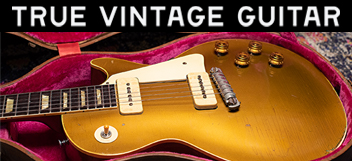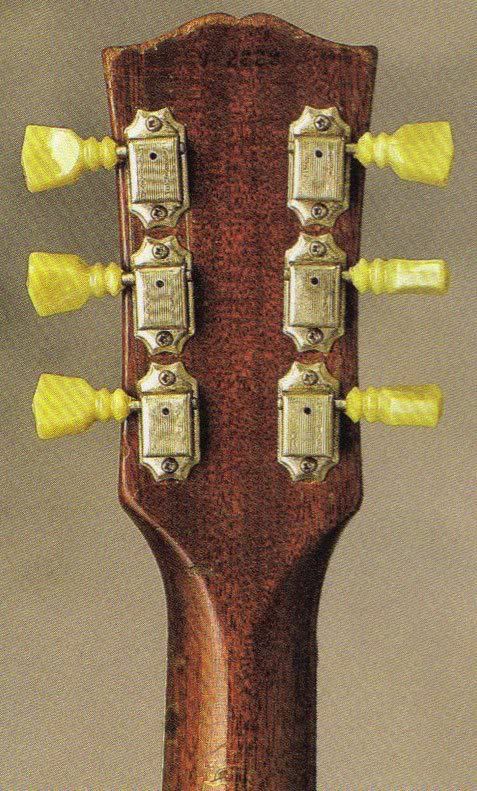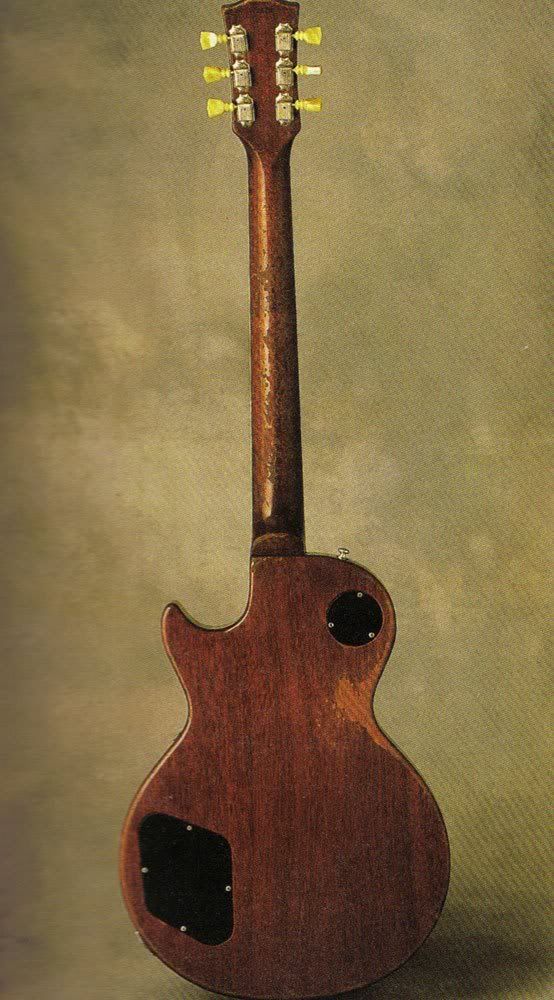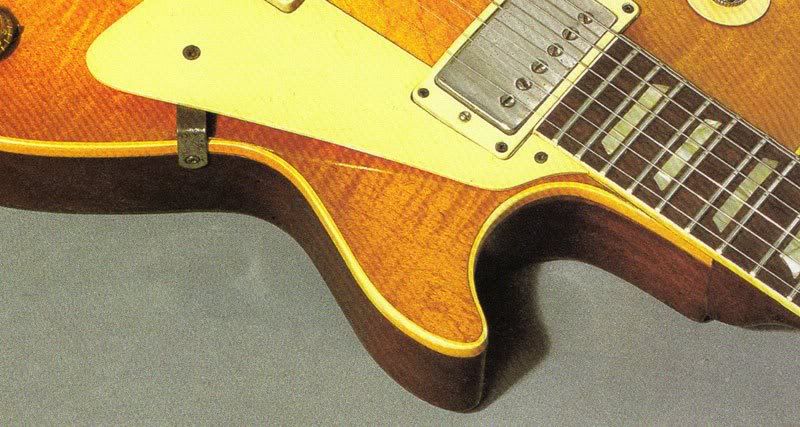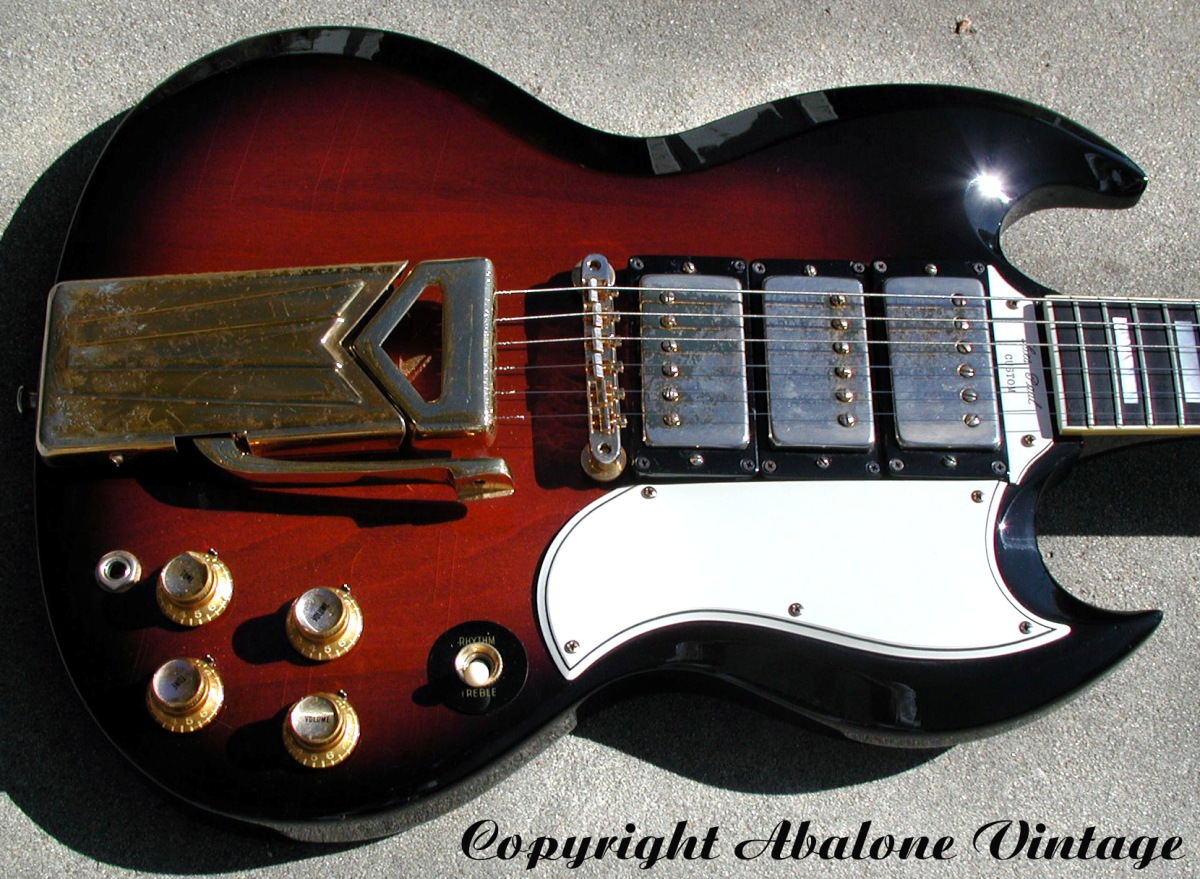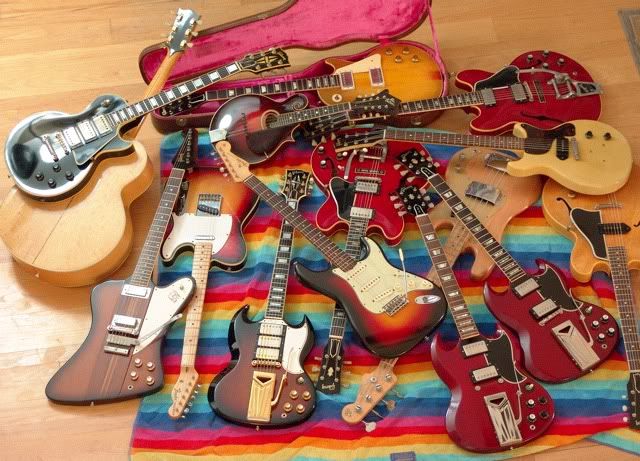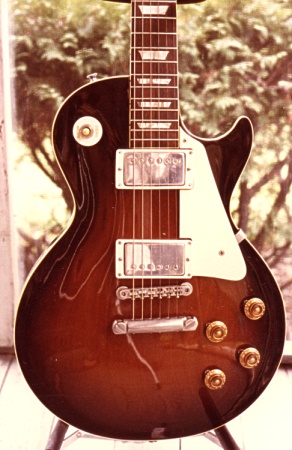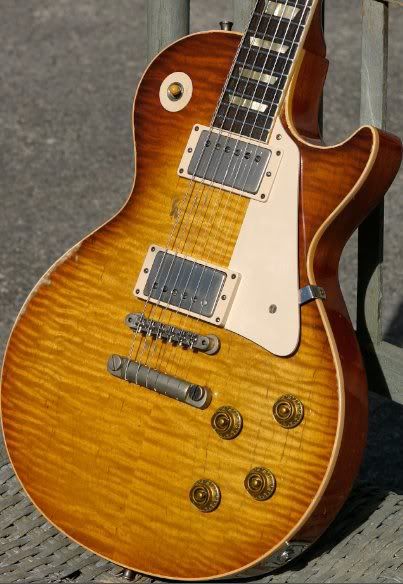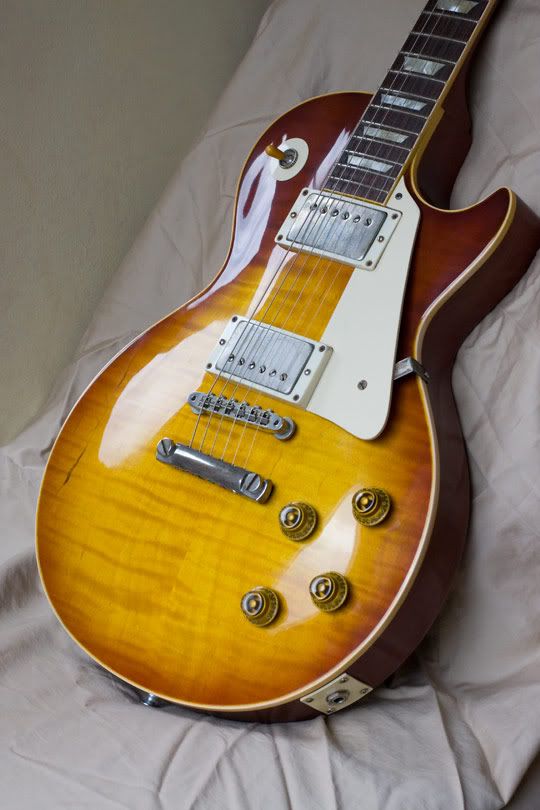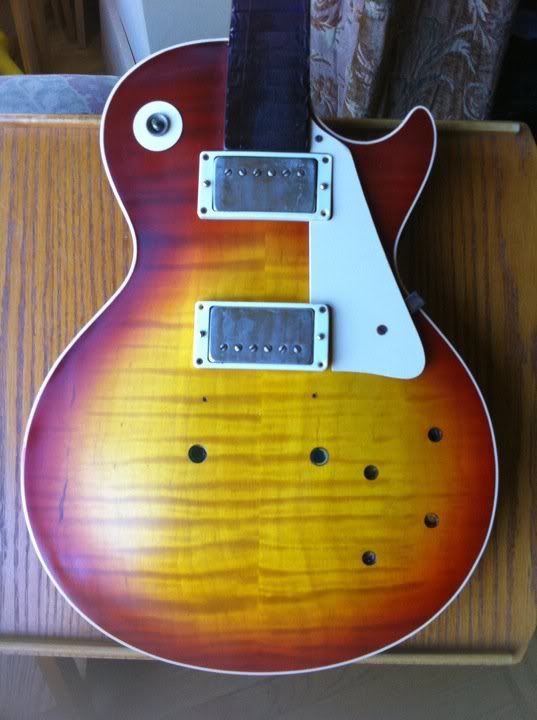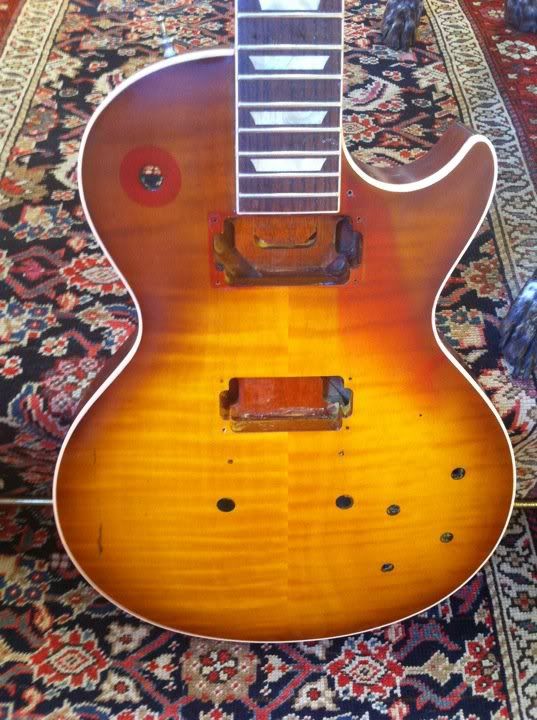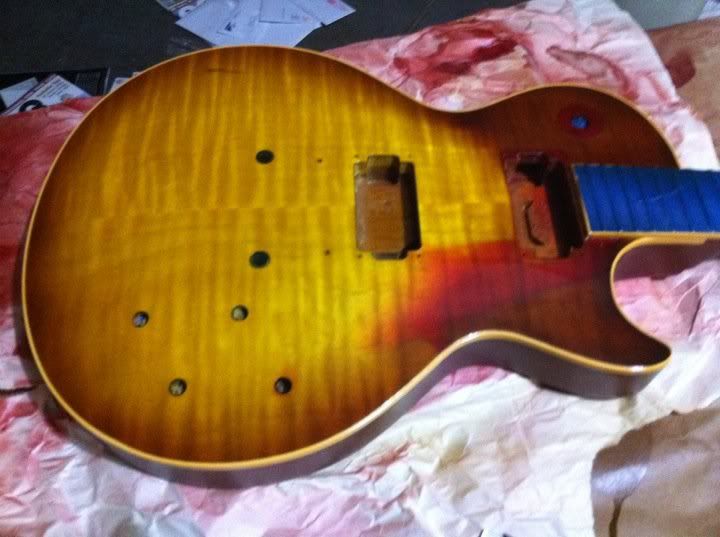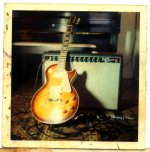j45
Active member
- Joined
- Jun 14, 2002
- Messages
- 9,081
Here's an enlargement of Clay's pic. This area was sprayed bright cherry red, I know this because have seen it still bright cherry mnany times. The outer band ends where you see it end. You will many times see this are under the tip still bright cherry, dark maroon, or completely browned. All the while the back remains cherry in that same area of the band. If the outer coat had something to do with this the same outer coat would have an effect on the back band as well. The concealed outline of the pickguard you see will also sometimes be cherry, brown or maroon with much more color remaining than on this example. It's pretty clear that red dye in 1959 turned enough colors to account for just about every burst you'll fing execp the "tobacco" examples. I've been noticing this on old Strats for three decades.
I can clearly recall buying two '59 pristine maple neck Strats in the same day in around 1982. I stopped by the shop of a well known luthier back in that day in New Orleans and when I opened the cases he said "what happened to that one?!!" One had a brownish maroon band that was splotchy the other was red, both guitars were pristine. BOTH were cherry on the back. We argued about the guitar, this guy trying to tell me the front had been refinished. When we pulled the pickguard it still had a cherry overspray under the outline of the guard. I finally got him to believe that this guitar had changed colors while the other one hadn't. And I do have pics of this guitar stored either on floppy or CD. I will dig them up.
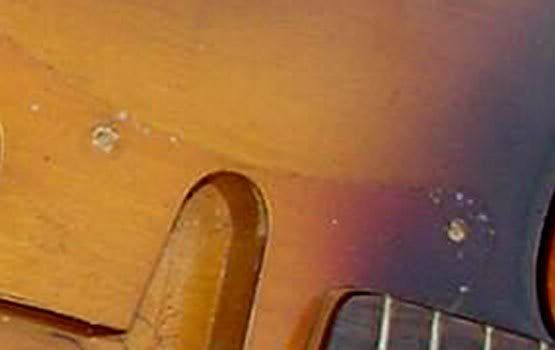
I can clearly recall buying two '59 pristine maple neck Strats in the same day in around 1982. I stopped by the shop of a well known luthier back in that day in New Orleans and when I opened the cases he said "what happened to that one?!!" One had a brownish maroon band that was splotchy the other was red, both guitars were pristine. BOTH were cherry on the back. We argued about the guitar, this guy trying to tell me the front had been refinished. When we pulled the pickguard it still had a cherry overspray under the outline of the guard. I finally got him to believe that this guitar had changed colors while the other one hadn't. And I do have pics of this guitar stored either on floppy or CD. I will dig them up.



